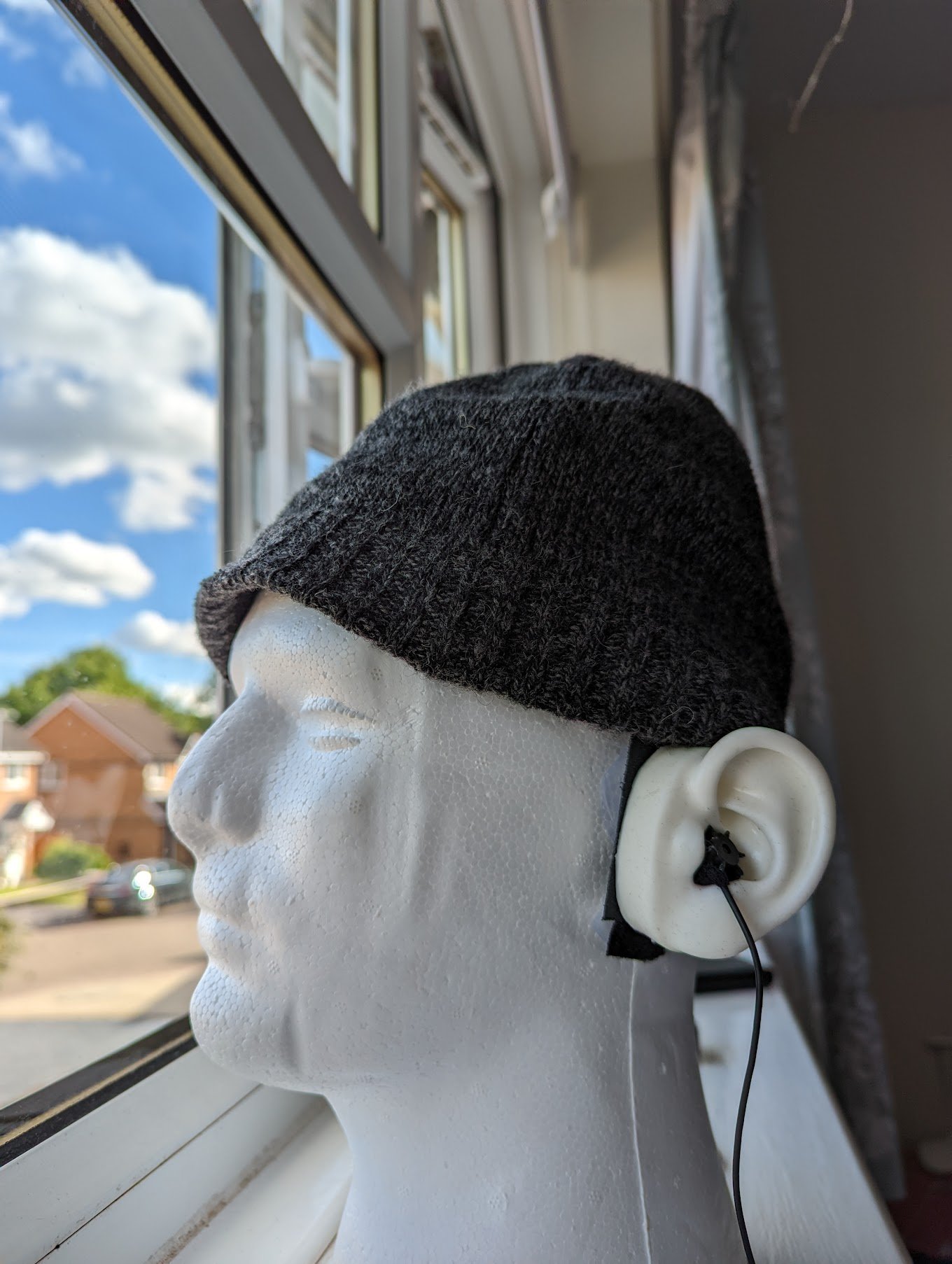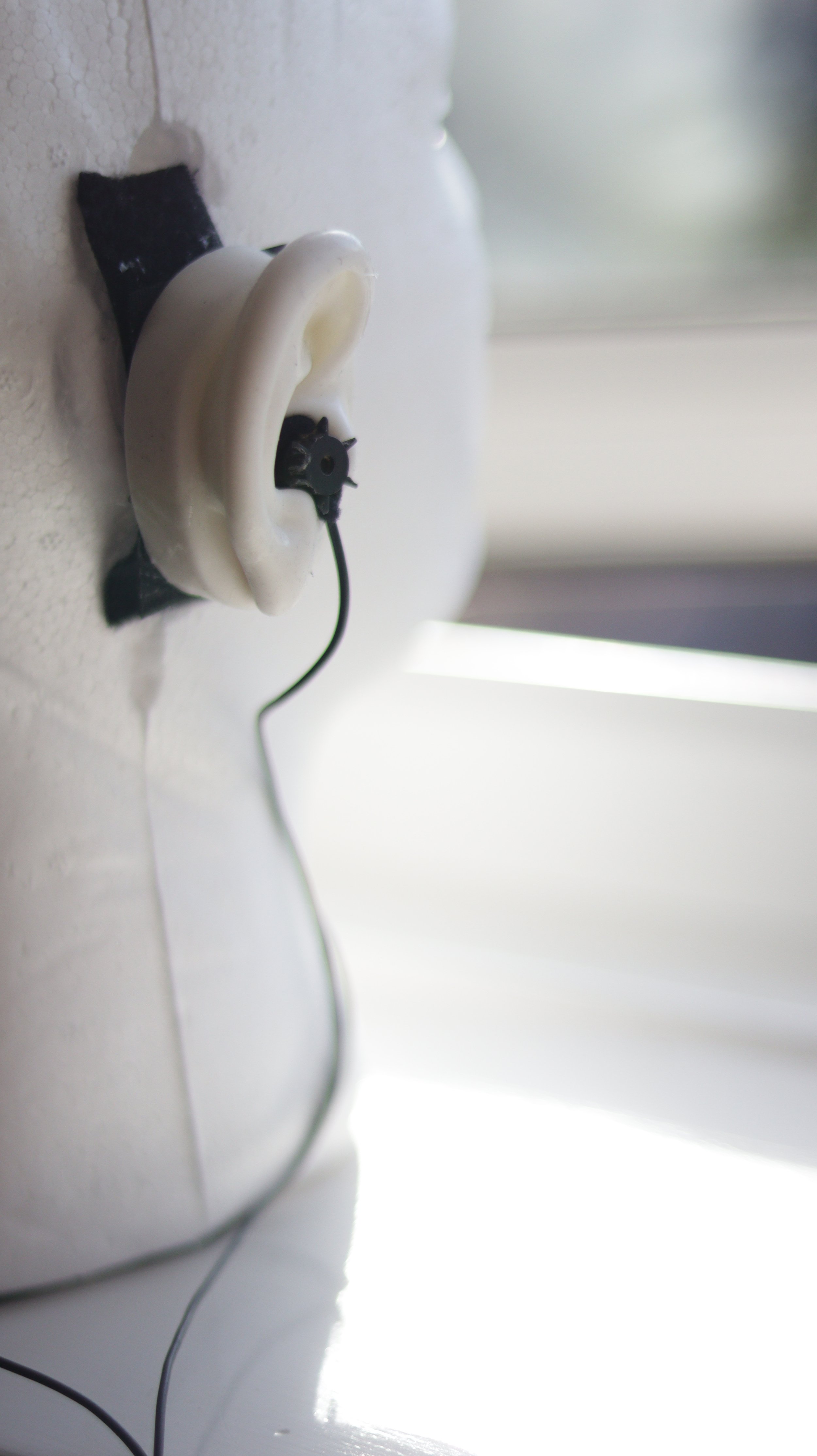Thoughts
Of course I am under no illusions (nor should I be given my background!) that this DIY set up is ever going to be as good as your own head, nor is it going to be as robust or precise as something like the Neumann head.
Then again that is not the point of this project…
The idea is to create a cheap binaural recording system which provides a basic HRTF (head related transfer function) and non-coincident separation between two microphones, which provide the listener with occlusion and interaural time and level difference. In which case, I think Billy (the head) works pretty well and I would encourage anyone who's thinking about experimenting with sound, field recording or sound design it to spend £15 (correct in 2022) on building your own DIY head of some form, sticking your mics in or on it see what you are able to record.
You could easily put Billy the Head in a bag and take him out for the day to do some nature or cityscape recording. The head is easily mountable on a tripod, all that would be needed would be to glue a base plate to the head to screw on to a tripod or of course it could just be rested on something.
I think you can have a lot of fun with the method, placing the head in unusual places, and experimenting with placement, mics, ASMR and much more. Remember field recording is a serious endeavour, but it's also supposed to be fun. We're supposed to have fun in our lives, so bring back some enjoyment to your recording, enjoy what you record, experiment and explore.











